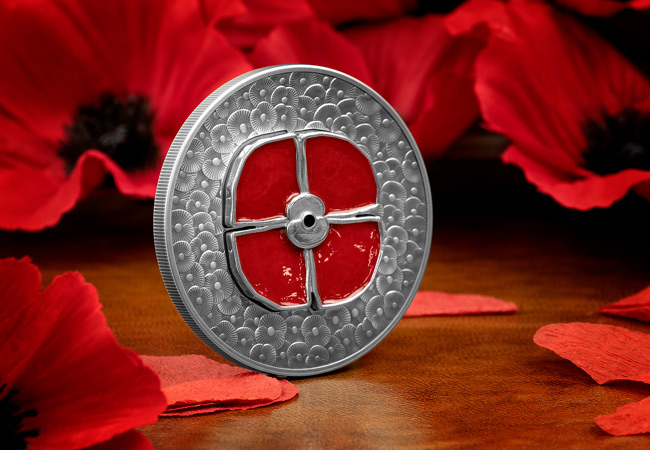Information
BREAKING: The Sovereign which sold out in less than a day
The UK 2022 Gold Proof Sovereign was released at 9am yesterday. In less than a day, the whole range was sold out at the Royal mint.
That makes it the fastest selling sovereign. Ever.
And this isn’t by chance. Here’s how the 2022 Sovereign has already become the UK’s fastest selling ever.
Special one-year-only design
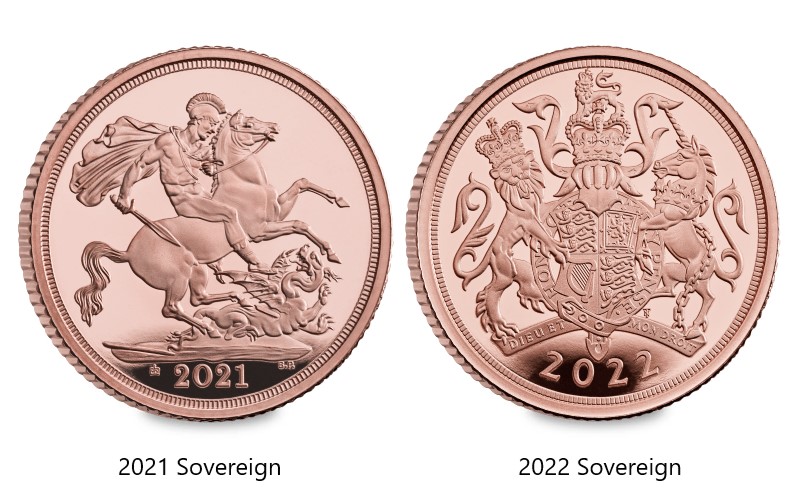
This year, The Royal Mint took the decision to issue a special one-year-only design to commemorate the Queen’s Platinum Jubilee next year. Sovereign design changes don’t come around often, and this is the first time since 2002 that the iconic St George and the Dragon design was removed from the reverse.
Once in a lifetime Sovereign
The Sovereign was issued to mark the Platinum Jubilee of Her Majesty Queen Elizabeth II. The Queen will mark an impressive 70 years on the throne in February next year – something that we are unlikely to ever see again in our lifetime.
Edition limit
Importantly, the edition limit of the 2022 Sovereign was just 10,500 – this is the same as the 2017 Sovereign which also featured a one year only design change. The 2017 sovereign sold out in just a few days due to unprecedented collector demand, so there was already huge demand expected for this release.
We still have a limited number of the UK 2022 Sovereign available for customers. If you’d like to order the UK 2022 Gold Proof Sovereign, please enter your details below and a member of our team will contact you.
We will only contact you with regards to this launch, your details will not be used for any other purposes.
One-year-only Design Change Revealed
It’s the coin release that collectors wait all year for. The new UK 2022 Gold Sovereign has just been released.
And it’s safe to say the collecting world has not been disappointed.

For 2022, the Sovereign has been dedicated to the Platinum Jubilee of Her Majesty, Queen Elizabeth II. The iconic St George and the Dragon has been replaced by a reverse design depicting the Royal Coat of Arms by Timothy Noad. It’s said to represent the Queen’s unwavering grace and dedication to her country.
There are just two other Sovereigns issued under Queen Elizabeth II that do not have a depiction of St George and the Dragon (issued in 1989 and 2002). And that makes the 2022 Sovereign an incredibly rare and unique piece.

Importantly for collectors, the edition limit of the 2022 Sovereign is just 10,500 – that matches that of the UK 2017 Bicentenary Sovereign (the last time we saw a design change) which sold out in record time.
Given the importance of next year for Her Majesty, and the fact that this design change is so rare, there’s expected to be a serious collector demand.
If you would like to order the UK 2022 Gold Proof Sovereign, please enter your details below and a member of our team will contact you:
We will only contact you with regards to this launch, your details will not be used for any other purposes.
The story behind this year’s RBL Masterpiece Poppy Coin
Want to know how a 1945 British Army Mess Tin, a WWII Spitfire and a D-Day Landing Craft have been repurposed to serve as a poignant tribute to the fallen? Keep reading to find out.

Army Mess Tins 
WWII Spitfire 
Landing Crafts on D-Day
Since 2004, The Westminster Collection has felt honored to be in partnership with the Royal British Legion, supporting them year on year by raising funds which enable them to continue to provide financial, social and emotional support to members and veterans of the UK Armed Forces, their families and dependents.
In support of the Royal British Legion, each year we produce a stand-out coin to mark Remembrance Day. We call it the ‘Masterpiece’.
And now, we’re excited to announce details of this year’s ‘Masterpiece’ coin…
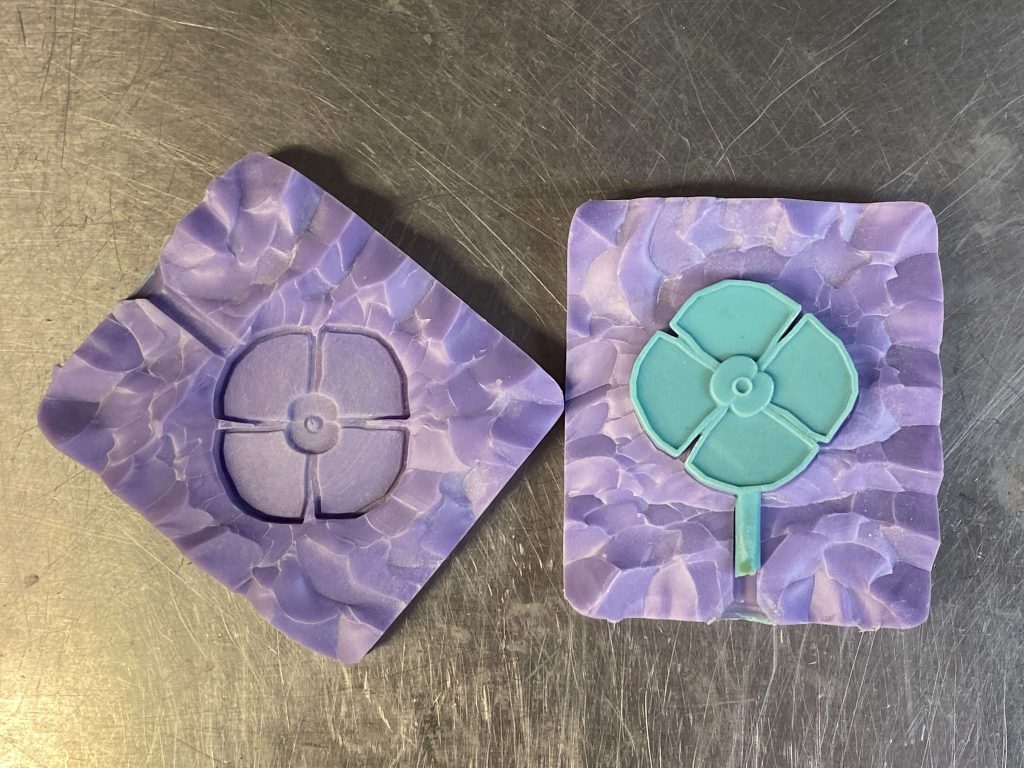
Masterpiece Poppy Coin mould 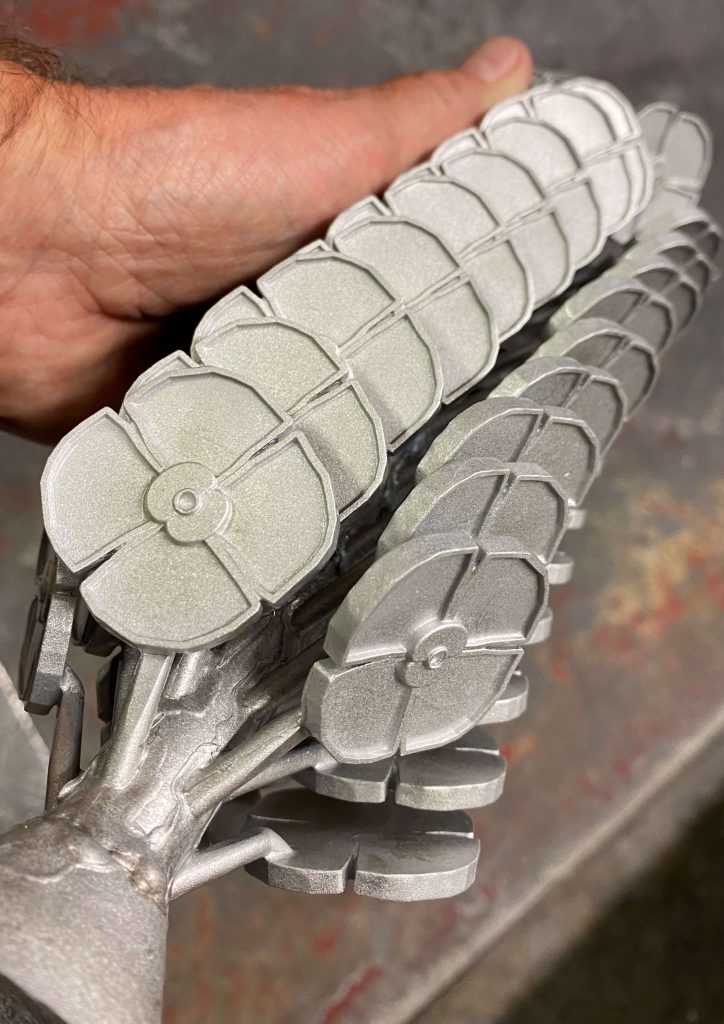
Masterpiece Poppy Coin centrepiece
When you discover the story behind the metal used to create this coin, you’ll quickly realize that it’s one of the most unique and historically fascinating coins ever released. It really does live up to its name.
The Masterpiece
As this year marks the Centenary of the Royal British Legion, an exceptional Masterpiece Poppy Coin has been released, commemorating this important milestone. It represents the three military facets of RBL ─ the Army, RAF and the Navy.
This is why we commissioned a three-dimensional ‘1921 style’ Poppy to be crafted from three pieces of historic metal representing the three divisions of the military:
1. WWII Spitfire ─ to be precise, the MK356, which flew during the D-Day campaign and shot down a German Me Bf109
2. A British Army Mess Tin from 1945
3. Landing Craft LCT7074 ─ the actual craft that landed on Gold Beach during D-Day
Historic Metals ─ crafted into a Masterpiece…
We acquired the craft metal with the kind assistance of the National Museum of the Royal Navy at Portsmouth, allowing us to source the substance from the original steel plating of the landing craft LCT 7074. LCT 7074 landed on Gold Beach on D-Day, 6th June 1944, and the plating used is from the hull that was physically in contact with the actual beach on D-Day itself. Today, LCT is the only surviving Landing Craft Tank left from this momentous day.

The LCT 7074 last surviving Landing Craft in Portsmouth 
Extracting steel from the LCT 7074 Landing Craft Tank 
Steel taken from the LCT 7074 Landing Craft
You may notice dark spots visible within the red enamel of some Poppies ─ and these are the filings from the historic LCT 7074 Steel.
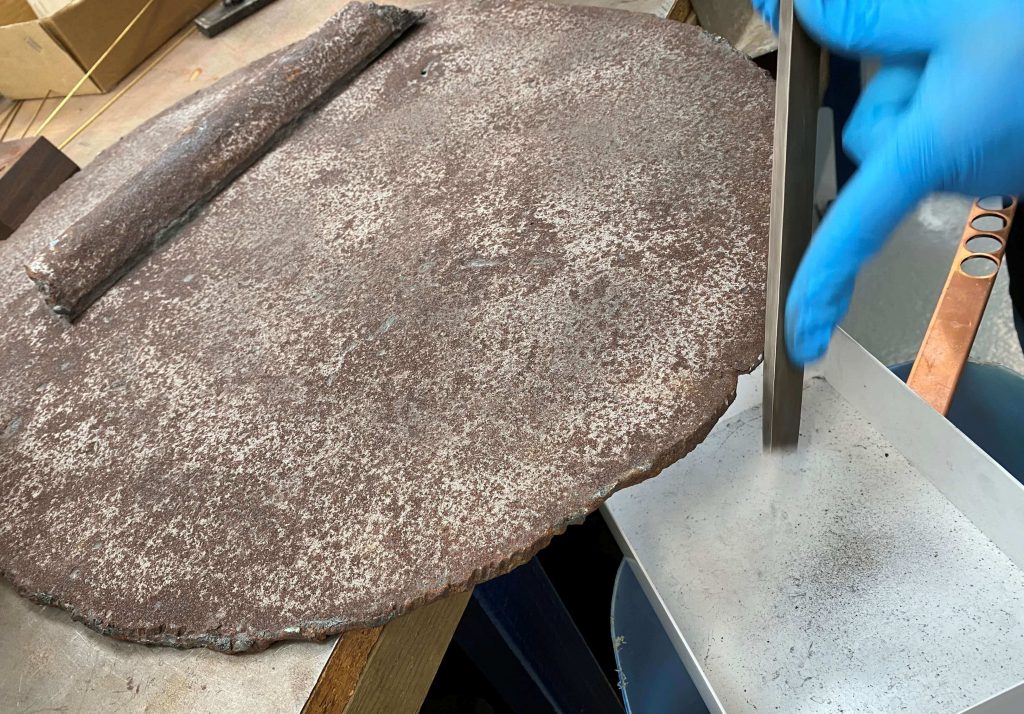
Filing the steel taken from the LCT 7074 Landing Craft 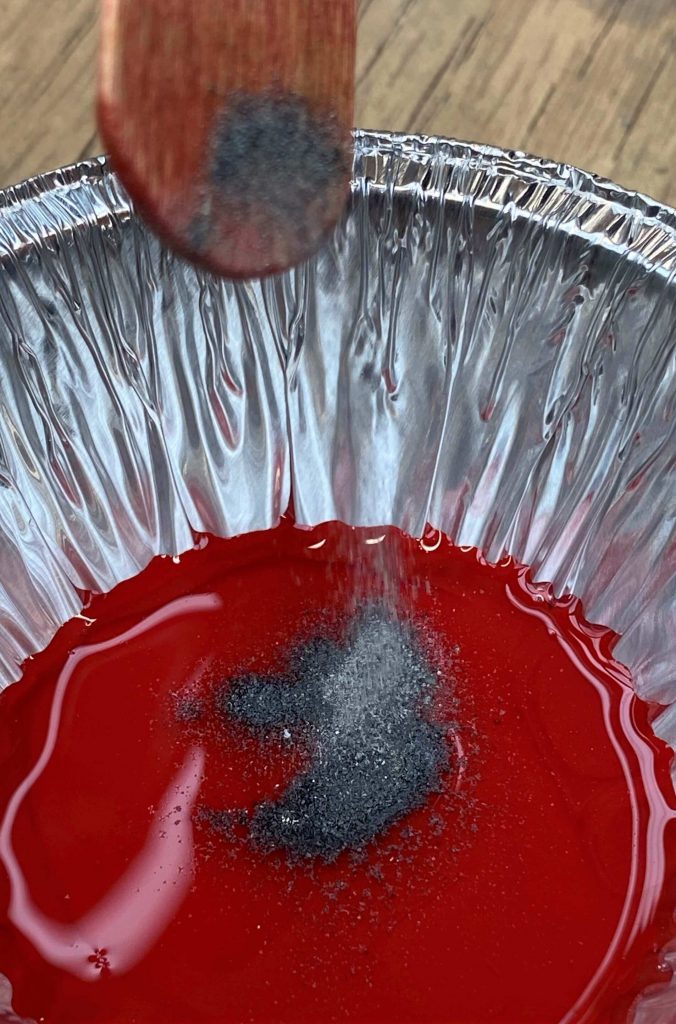
Steel filings from the LCT 7074 Landing Craft placed into the red enamel liquid for the Masterpiece Poppy Coin
The material used derived from Army origins is a combination of ex-MK356 metal and 1945 dated ex-British Army Mess Tins, mixed to a 50:50 ratio. The MK-356, officially named the Spitfire Mk IX, took an active part in D-Day operations in June 1944. The original wing main spar was removed around the year 2008, and it is this metal that has been combined with the Mess Tins.

Army mess tins being melted down 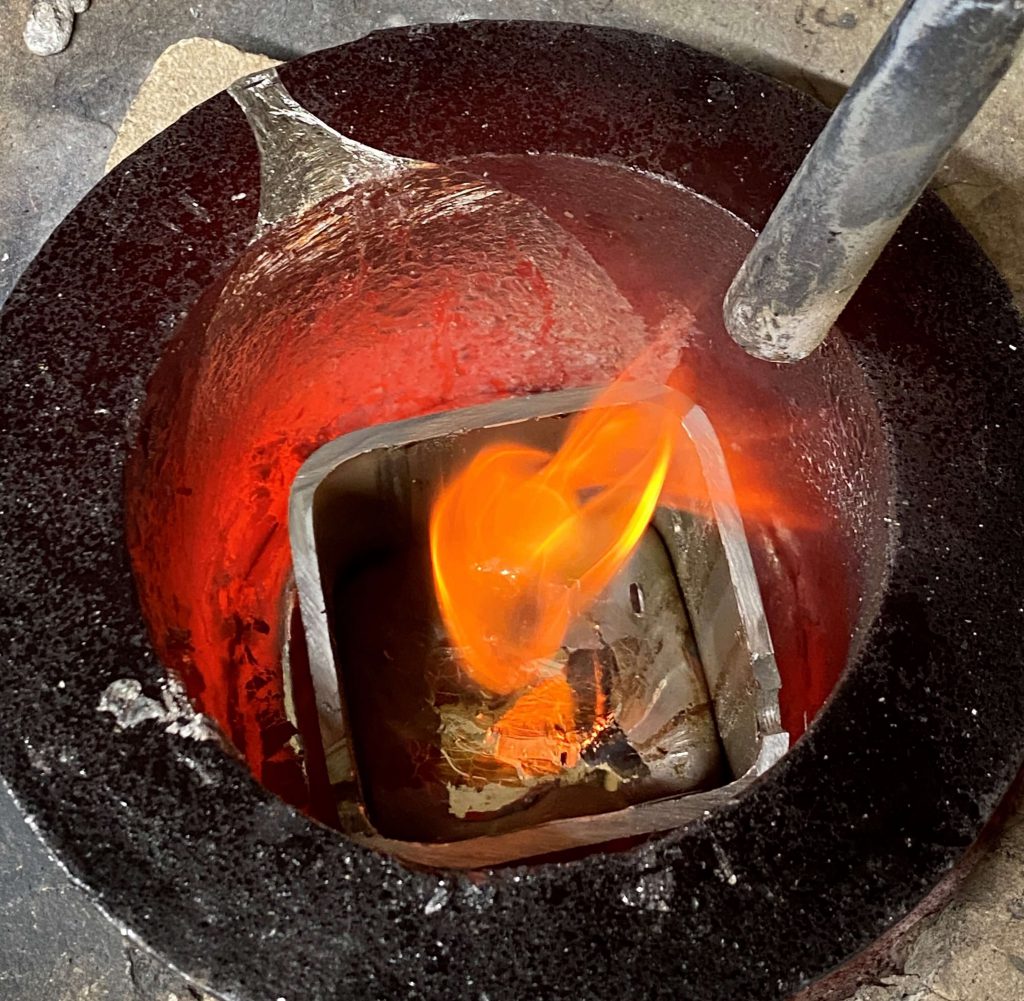
Army mess tin turning to liquid under heat
Mess tins were and still are used for a number of different things within the Army. Soldiers use them to heat food, eat from, boil water and to wash and shave in. They can be cleaned easily and used for storage of other items.
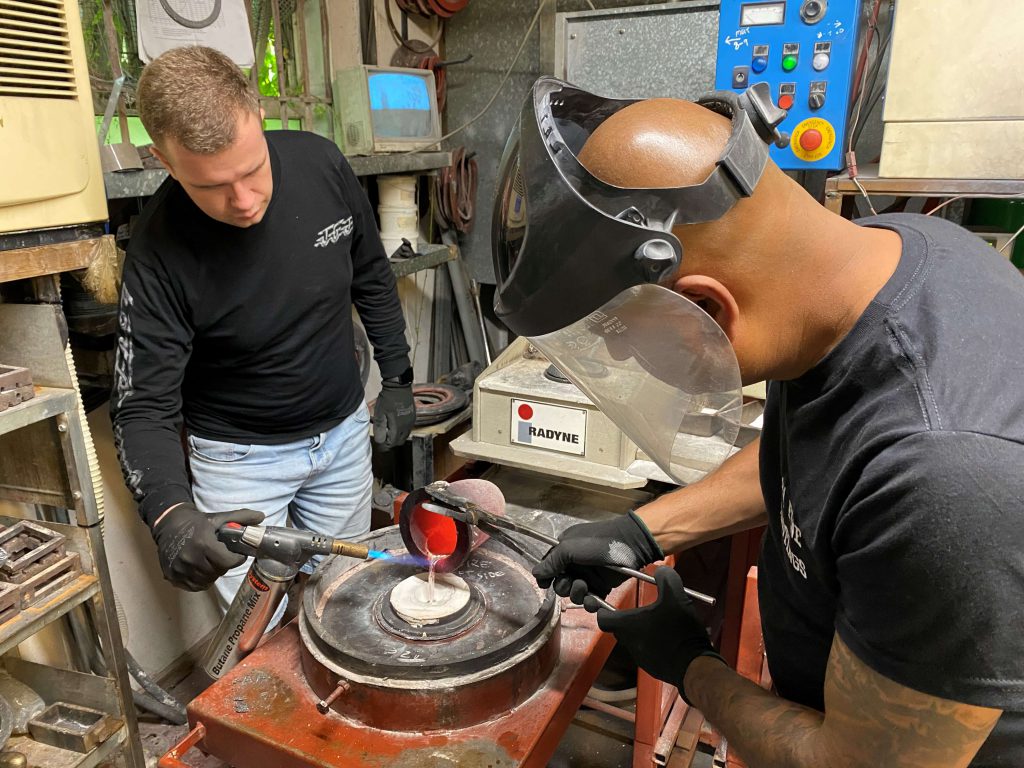
Hot Army mess tin melted liquid being handled 
Hot Army mess tin melted liquid
During the Second World War, aluminum was a scarce commodity primarily reserved for aircraft production, and whilst perhaps not as romantic as the Spitfire, these tins are significant items ─ because an army marches on its stomach!
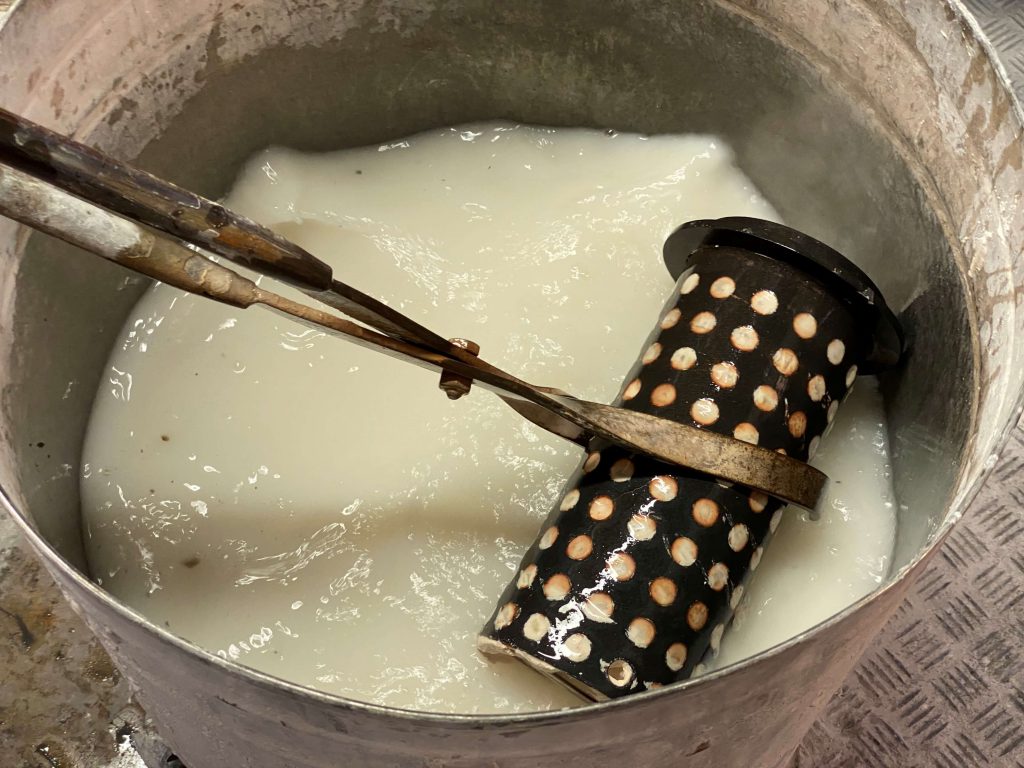
Poppy mould being put in liquid to begin the process of shaping the centrepiece for the Masterpiece 2021 Poppy Coin 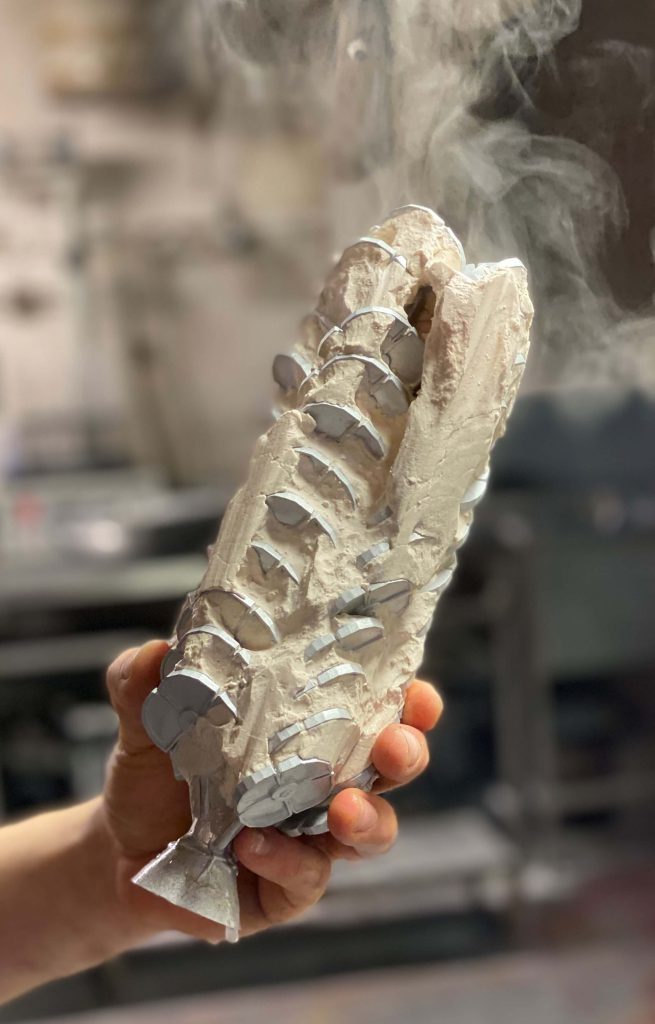
Masterpiece Poppy Coin centrepiece having come out of the liquid 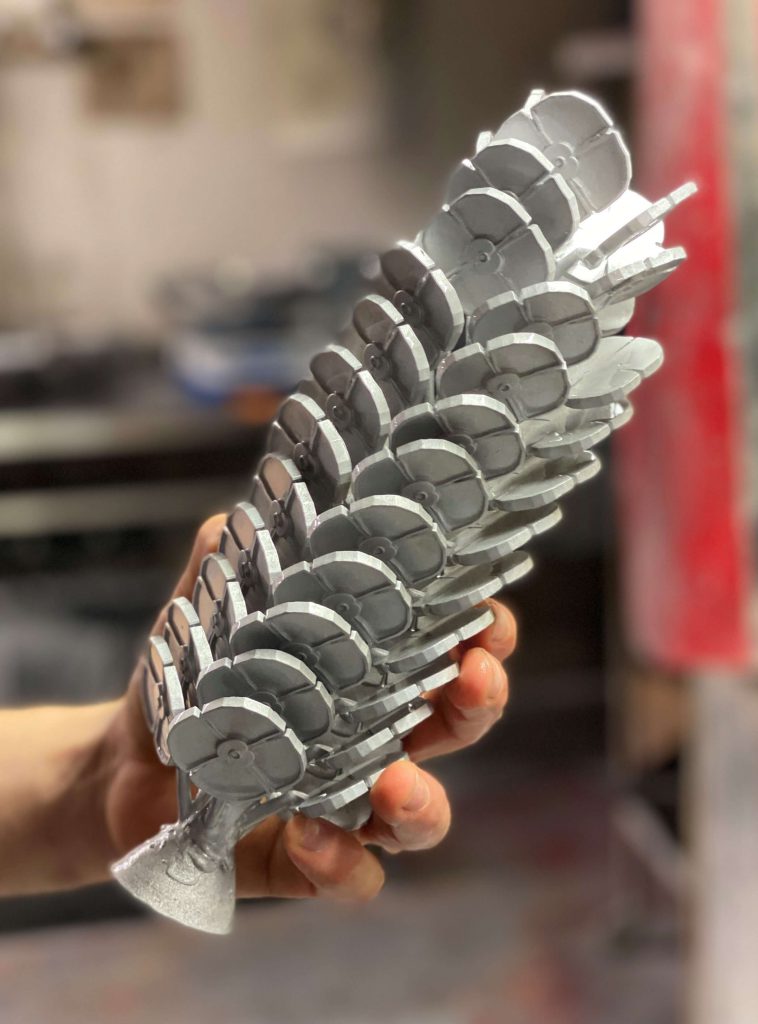
Masterpiece Poppy Coin centrepiece having been cleaned 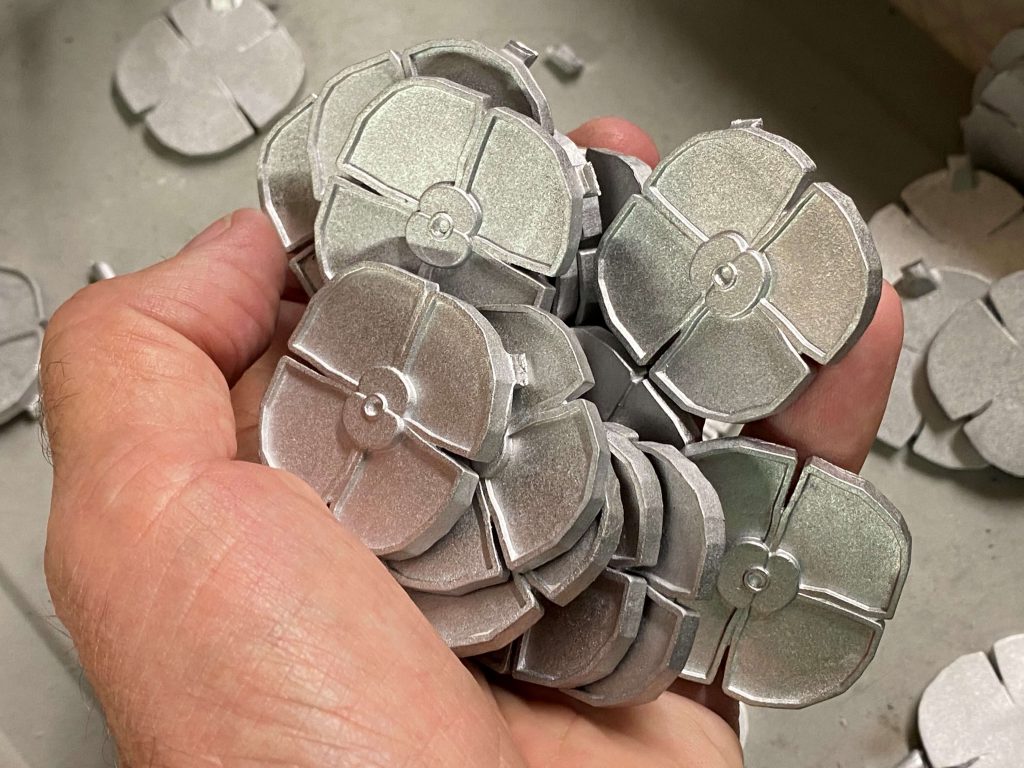
Individual Masterpiece Poppy Coin centrepieces 
Masterpiece Poppy Coin centrepiece being filled in with the red enamel liquid 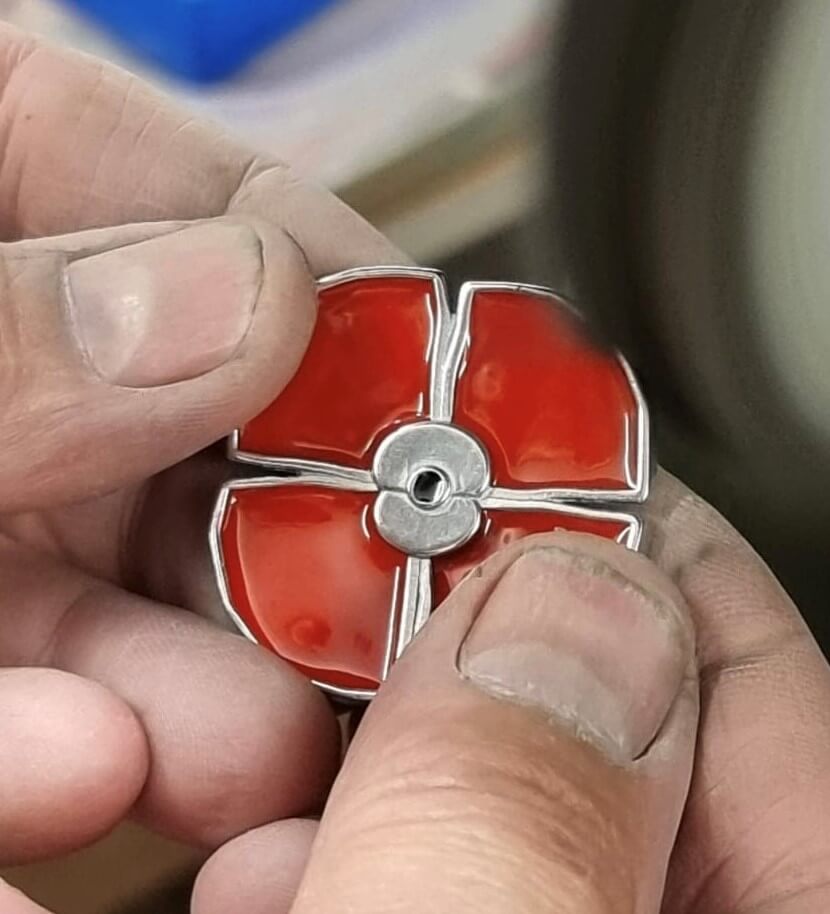
The Masterpiece Poppy Coin Centrepiece
What’s more, it has been struck from 5oz of fine 999/1000 Silver and is an impressive 65mm in diameter!

